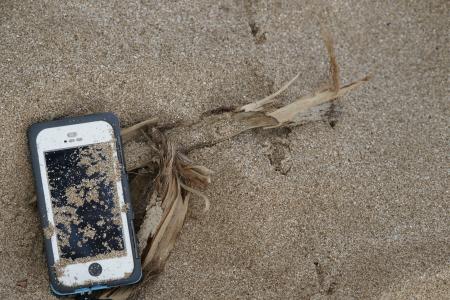Members of the North Shore Lifeguard Association face tough conditions on and off duty. The organization consists of lifeguards posted on the North Shore of Oahu, which boasts some of the most dangerous water not only in Hawaii but also in the world. Sun, sand, water and rigorous physical pursuits don’t mix well with mobile technology, so to stay connected the NSLA took the plunge with the OtterBox Armor Series – The Toughest Case Ever Built.
The NSLA is dedicated to community outreach and education as a means of making the residents of and visitors to the North Shore aware of ocean safety. The group supports the local junior lifeguard program, which trains the community’s youth on basic ocean safety and life-saving skills. A number of the lifeguards participated in the program when they were children.
|
The Toughest Case Ever Built |
|---|
|
The OtterBox Armor Series pushes technology protection to its boundaries by combining precision design and top-quality materials. The Armor Series is rated to withstand:*
|
“The North Shore is very different than a lot of places in the world,” explained Jason Bitzer, NSLA member and seven-year lifeguard. “The energy here in the swell is unlike anywhere in the world. The waves are extremely powerful, and the rip currents are extremely dangerous. There’s not a place on earth that is like the North Shore in that it’s very accessible and so dangerous. The North Shore Lifeguard Association has a big responsibility to make the public aware of that.”
In the course of a year, the North Shore beaches – including the infamous surfing destinations of Waimea, Pipeline and Sunset - can see almost 3 million visitors. In 2012, members of the NSLA performed 236 rescues, treated 166 serious medical emergencies and issued 56,200 preventative warnings to beach goers.
“There really is no such thing as an average day. Every day is different depending on what the ocean wants to throw at us,” said NSLA member Mike Jutt. “Some days can be fairly uneventful and some days it’s chaos in every direction. We respond to things all over the district, which spans well over 30 miles of coastline.”
As in most professions, mobile technology is becoming an ubiquitous tool of the trade. From communications to weather predicting apps, NSLA members are finding their mobile phones an indispensible piece of gear, and being in an extreme environment demands an extreme level of protection.Jutt explained that while assigned to the truck, he is often called to respond to situations at many remote locations. Dispatch will provide a phone number for the caller so that the lifeguards can communicate one-on-one and get real-time responses about the situation and location. Once on scene, phones are tossed aside. For Jutt, that often means in the sand or on the concrete.

“I’ve broken almost every phone I’ve owned for the most part,” Jutt said. “[With the Armor Series], I don’t have to worry about it at all, now. It’s taken a beating and my phone works perfectly. I don’t have to worry about tossing it in the sand to respond quickly, and coming out of the water I can use it right away without worrying about my hands being wet.”
Bitzer uses his device to prepare for his day. Using a variety of apps and mobile sites, he checks swell forecasts, tidal predictions and wind conditions to better understand what to expect, which is especially important along the volatile North Shore.
“If you think it’s going to be a small day but aren’t paying attention to what the local conditions are going to be, you can put yourself in jeopardy and not be prepared for what can happen,” he said. “As a lifeguard, everything is preventative. You shouldn’t be responding all of the time, you should be preventing things from happening.”
Lifeguarding is a “zero-to-60” type of occupation, Bitzer explained. Things go from calm to chaos in the matter of seconds, and mobile technology is often victim to the sudden fury of quick response.
“My phone has been broken six times within my career just being in the vicinity of the lifeguard tower,” Bitzer said. “Having a case that basically protects my phone in every situation is amazing."
RELATED MATERIALS:
NSLA Case Study Video
PDF VERSION OF CASE STUDY